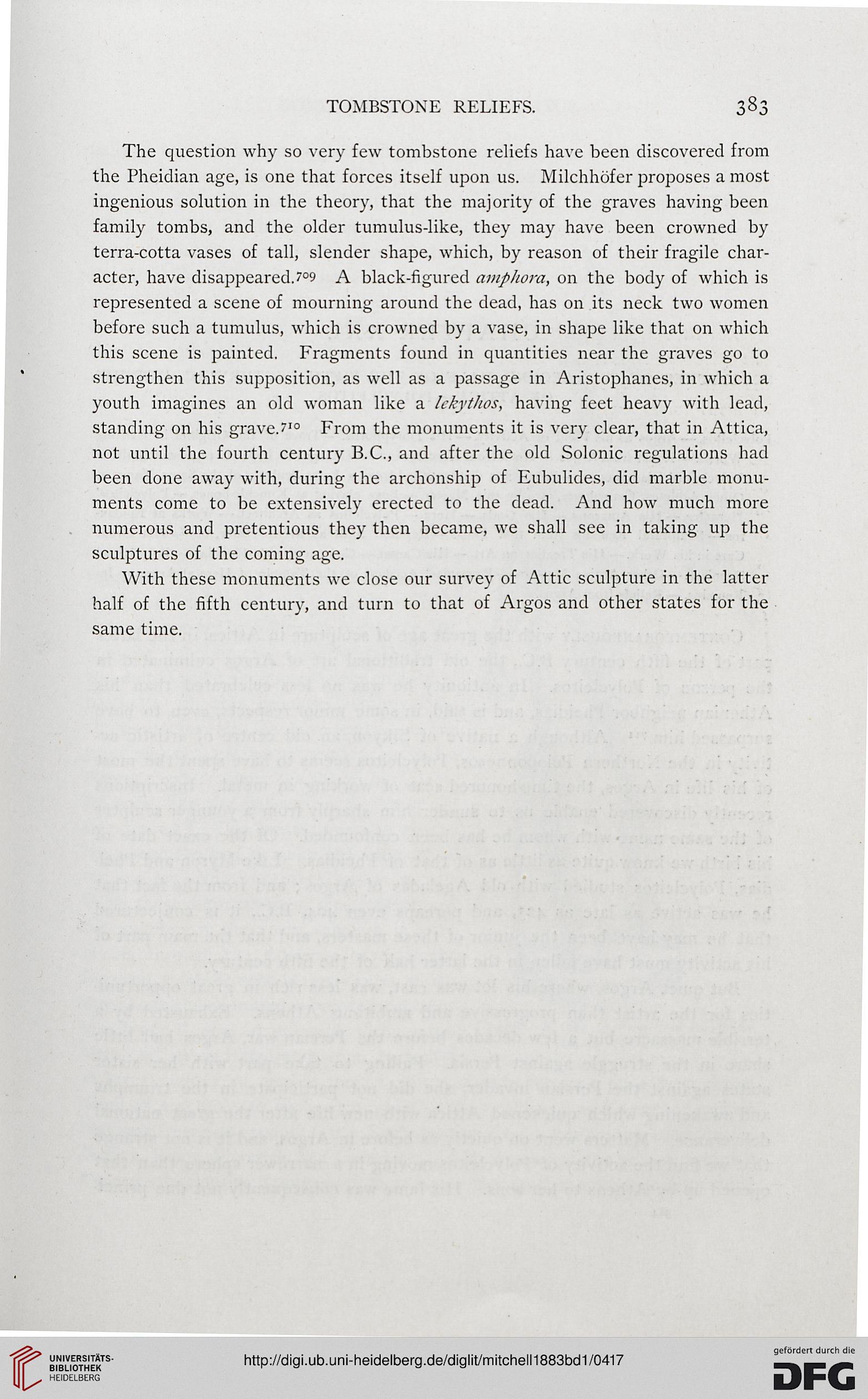TOMBSTONE RELIEFS. 383
The question why so very few tombstone reliefs have been discovered from
the Pheidian age, is one that forces itself upon us. Milchhofer proposes a most
ingenious solution in the theory, that the majority of the graves having been
family tombs, and the older tumulus-like, they may have been crowned by
terra-cotta vases of tall, slender shape, which, by reason of their fragile char-
acter, have disappeared.?00 A black-figured amphora, on the body of which is
represented a scene of mourning around the dead, has on its neck two women
before such a tumulus, which is crowned by a vase, in shape like that on which
this scene is painted. Fragments found in quantities near the graves go to
strengthen this supposition, as well as a passage in Aristophanes, in which a
youth imagines an old woman like a lekythos, having feet heavy with lead,
standing on his grave."10 From the monuments it is very clear, that in Attica,
not until the fourth century B.C., and after the old Solonic regulations had
been done away with, during the archonship of Eubulides, did marble monu-
ments come to be extensively erected to the dead. And how much more
numerous and pretentious they then became, we shall see in taking up the
sculptures of the coming age.
With these monuments we close our survey of Attic sculpture in the latter
half of the fifth century, and turn to that of Argos and other states for the
same time.
The question why so very few tombstone reliefs have been discovered from
the Pheidian age, is one that forces itself upon us. Milchhofer proposes a most
ingenious solution in the theory, that the majority of the graves having been
family tombs, and the older tumulus-like, they may have been crowned by
terra-cotta vases of tall, slender shape, which, by reason of their fragile char-
acter, have disappeared.?00 A black-figured amphora, on the body of which is
represented a scene of mourning around the dead, has on its neck two women
before such a tumulus, which is crowned by a vase, in shape like that on which
this scene is painted. Fragments found in quantities near the graves go to
strengthen this supposition, as well as a passage in Aristophanes, in which a
youth imagines an old woman like a lekythos, having feet heavy with lead,
standing on his grave."10 From the monuments it is very clear, that in Attica,
not until the fourth century B.C., and after the old Solonic regulations had
been done away with, during the archonship of Eubulides, did marble monu-
ments come to be extensively erected to the dead. And how much more
numerous and pretentious they then became, we shall see in taking up the
sculptures of the coming age.
With these monuments we close our survey of Attic sculpture in the latter
half of the fifth century, and turn to that of Argos and other states for the
same time.




